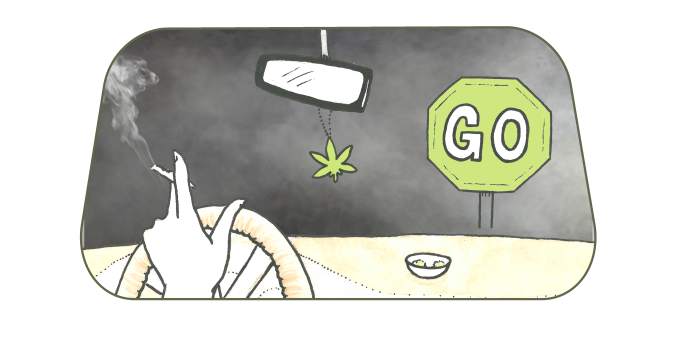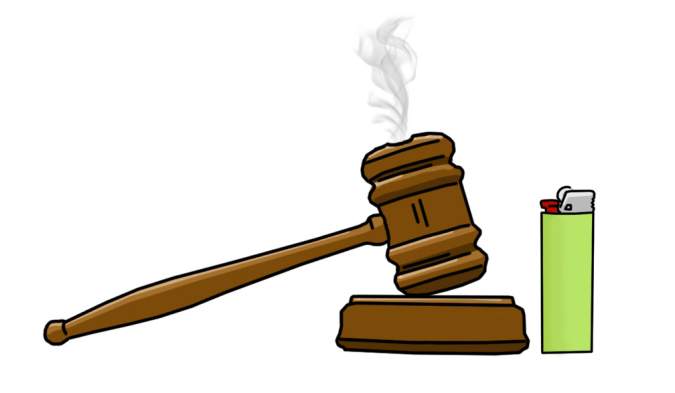A look back at the next five years.
As I write this on April 20, 2020, I’m impressed by how far the legalization movement has come since Washington and Colorado first voted to legalize recreational marijuana in 2012. I am still alarmed we’ve not yet overturned prohibition at the federal level, but let’s take a look at how far we’ve come.
STATES
Seventeen states have now legalized cannabis, including Minnesota, Florida, and, surprisingly, Arizona. The third time was a charm for California, which finally legalized weed after ballot initiatives were defeated in both 2010 and 2016. (In each of those elections, competing ballot measures confused and divided the already-stoned masses.)
Of the 17 states to fully legalize, tax, and regulate cannabis, only Hawaii and Massachusetts passed their laws through the legislative process. Aloha State Gov. David Ige said it best: “Sure, we could have had a ballot initiative, but we’re trying to save paper.” In 2018, Oregon became the first state to repeal legal cannabis, overturning the measure it passed in 2014. (Make up your mind, Dank Ducks.)
And who would have thought that Las Vegas would become the World’s Cannabis Capital over Denver, Seattle, or Berkeley? With dozens of 420-friendly resorts, StarBud cafes on every corner, and Amsterdam-themed casinos, Vegas, thankfully, is for adults again. What happens in Vegas stays in Vegas . . . because no one can remember what the hell happened in Vegas.
ECONOMY
Marijuana is now a $26-billion-a-year industry, successfully eclipsing organic food, cosmetics, and the NFL in sales. It has also garnered more than $9 billion a year in tax revenue, funding roads, infrastructure, drug education, and the nationwide Green Electric Train system. New Jersey has shown the most dramatic turnaround, from bankruptcy in 2017 to a huge surplus after turning its Jersey Shore boardwalk back into a smoky, lowbrow bacchanal. An often-overlooked benefit of the new economy is jobs, more than 250,000 of which have been created, including web developers, specialized security, “manicurists,” and cannabis chefs.
GANJAPRENEURS
The Green Rush has led to products and services no one could have imagined back in 2012, including the word’s first digital vape phone (iStoned), Tesla’s HempRoadster, CannaAspirin (a Privateer Holdings and Bayer joint venture), and Virgin’s Flying HotBox Airline. WeedTourism is also booming with Bud ’n’ Breakfasts, guided Ganja Artwalks, and Stoned Symphony Nights. Mergers and acquisitions have been fast and furious in Internet marijuana businesses (which, unlike the plant, can cross state lines): Leafly was purchased by Yelp, WeedHire by Monster, Weedmaps by Groupon, and Higher Ground by Time/Warner. Surprisingly, the top celebrity-endorsed weed strain was not Willie Nelson’s Reserve, Snoop Chronic, or (Bob) Marley’s Natural, but Kardashian Kush, which—according to all reviews—consistently knocks you on your gigantic ass.
Edibles currently make up 55 percent of the market, CBD oils and concentrates another 15 percent, and elixirs 23 percent, leaving flower (buds) to make up only 7 percent of marijuana sales.
MEDICAL
In 1995 not a single state had passed a medical-marijuana law, and only 25 percent of those polled believed in legalizing the drug. By 2015, 23 states had legalized medical cannabis. As of today (4/20/20), 42 states have now passed medical-marijuana laws, leaving only eight without any form of medicinal-cannabis law on the books. (We love you, Oklahoma, but rally yer wagons: Even gay marriage is fully legal in your state now.)
Today over two and a half million Americans receive some sort of support from cannabis-related products. Shockingly, five states have even allowed health-care providers to cover and reimburse medical-marijuana patients under their policies, including the newly formed Green Group Health Cross.
SCHEDULE 2
Perhaps Obama’s defining moment was not his (overturned, then re-implemented) Affordable Care Act, but his last-minute 2016 Executive Order that took marijuana off the Schedule 1 list of the Controlled Substances Act and downgraded it to Schedule 2. Although Schedule 2 drugs are still deemed to have high potential for abuse, cannabis is now clearly recognized for its medical benefits, and available for prescriptions.
This controversial move by a “What the Hell Have I Got to Lose” president has allowed clinical research roadblocks to be removed, delivering conclusive proof that cannabinoids are effective on chronic seizures, shrinking brain tumors, slowing Crohn’s disease, Parkinson’s, Alzheimer’s, and even helping with erectile dysfunction (who knew?). This last finding moved the last bastion of elderly white Congressmen holding up medical-marijuana legislation to act in several Southern states.
HEMP
After being cultivated for more than 12,000 years, hemp was finally fully legalized in 2018 with the Industrial Hemp Farming Act. Bred for its strong fiber, the sober sister to sativa has now replaced timber and concrete as the main building material in new home construction. With only trace amounts of THC, hemp is being used for clothing and rope, and hempseed oil now makes up over half the nation’s fuel supply. Hemp toilet paper, however, was a colossal flop, and we’ll leave it at that.
THE WAR ON DRUGS
The U.S. Supreme Court’s landmark ruling, Black Guy vs. DEA, stunned the nation by allowing states that have legalized marijuana to release and expunge records for individuals who had been convicted of nonviolent marijuana-related crimes. This ruling opened the floodgates for hundreds of thousands of (mostly African-American) men who had been incarcerated for crimes which are now minor infractions or fully legal. The case has led to nationwide changes in drug policy, redirecting an estimated $50 billion a year that had been previously spent on the War on Drugs to address more serious crimes (not to mention giving each and every U.S. citizen free cable for life). Writing for the majority, Supreme Court Chief Justice John Roberts commented, “In this particular case, it pains me to be consistent with my own values of states rights, individual liberties, unobtrusive government, and the pursuit of happiness.”
IT’S NOT ALL GOOD
As with any major public-policy change, there have been missteps in the movement. After plowing his golf cart into a set of extras on SuperBad 4, actor Seth Rogen became the first celebrity convicted of Driving Under the Influence of Marijuana. Blowing into a drugalyzer, Rogen registered a record THC level of 50 nanograms per milliliter. (Anything over five nanograms is the legal limit in Colorado.) America’s “If some is good, more is better” philosophy is kicking many smokers in the head, with THC levels skyrocketing to record heights. And while cannabis has still not been responsible for a single death the world over, the trend of “dabbing” (combusting highly concentrated cannabis with blowtorches and dab-rigs) is not only making pot smokers look like crack addicts, but energizing the “This is Your Brain on Dabs” antidrug crowd.
An active opposition still funds anti-marijuana campaigns (including Recall Cannabis efforts in legal states), primarily funded by the Koch Brothers (RIP), who left behind a massive Memorial Justice (MJ) endowment.
Sadly, many of our war veterans still do not have access to medical marijuana, which even back in 2015 had been proven to treat PTSD, anxiety, depression, and insomnia. Since marijuana is still illegal at the federal level, veterans fear being drug-tested, losing their jobs, or having their children and pensions taken away in the event that a less-favorable administration increases enforcement.
ACTIVIST NETWORKS AND THE MOVEMENT
Like MLK, Rosa Parks, Gandhi, and Harvey Milk before them, new activists are launching a marijuana movement involving personal rights, legal justice, and public involvement. These “Green Raiders” include Sen. Alison Holcomb (a key player with the ACLU and Initiative 502); now-Senator Barbara Lee (D-CA); New York Stock Exchange President Troy Dayton (previously of the ArcView Group); “Fuckit I Quit” Governor Charlo Greene (AK); U.S. Cannabis Ambassador Rick Steves; and newly appointed Hemp Czar Vivian McPeak (previously of Seattle Hempfest). This green group of pot evangelists is leading the way on organic standards for the industry, living wages ($25 an hour), thriving community unions, carbon-neutral chronic, and, most important, citizen empowerment on a host of vital issues.
Overall, legalization in 2020—as a (still) relatively new public experiment—is going swimmingly. With 20/20 vision, it’s clear the end of prohibition is in sight.
This article first appeared in the Seattle Weekly





